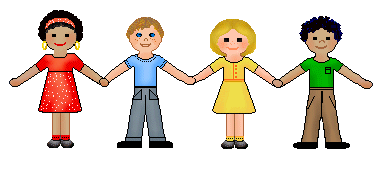One of the theoretical principles of Tikanga, the Māori way of doing things, is whanaungatanga. In this musing, I look at how this perspective can be identified in an early childhood setting.
The online Māori dictionary defines “whanaungatanga” as: (noun) relationship, kinship, sense of family connection - a relationship through shared experiences and working together which provides people with a sense of belonging. It develops as a result of kinship rights and obligations, which also serve to strengthen each member of the kin group.
The focus of Whanaungatanga is on togetherness and relationships to enhance a sense of belonging. This concept involves a group effort towards making decisions that benefit the community. From an early childhood perspective, this involves teamwork in the workplace that provides a positive outcome for tamariki, whānau, kaiako, as well as the wider community. Rose Pere also describes the concept of whanaungatanga within Te Wheke, a Māori model of whānau well-being, as: “The principle of working together to support each other across all generations.”
Whanaungatanga implies that one is not on one's own but has the guidance and support of the wider community. Working with this concept in early childhood centres involves good relationships amongst the community and a philosophy of kinship towards the decision making and planning process to achieve and offer a high quality of service. "Characteristics of independence are inconsistent with whanaungatanga. Interdependence with each other rather than independence is the goal" (Williams, N. and Elizabeth Broadley, M.)
Supporting each other as kaiako in a teaching team cannot be understated. We work together in close proximity to each other in early childhood settings and despite personality clashes, if there are any, we need to trust each other to perform our duties to the best of our ability to benefit the wider community. A positive and happy environment that is set by kaiako reflects on tamariki and their sense of belonging in the centre. "Belonging is nurtured through social interaction with kaiako and other children and by respecting the achievements and aspirations of each child’s family and community (Ministry of Education,p. 31, 2017).
Good relationships with each other as a team of teachers, as well as with tamariki and whānau are important. Caring for each other in a trusting and respectful environment stands everybody in good stead where support is offered where needed. Instilling a sense of identity and belonging can be achieved through acknowledging the whakapapa of tamariki and whānau. Tamariki can also be introduced to a simple pepeha to strengthen their own understanding of who they are and where they come from. This will help to strengthen connections with everyone involved in the centre. "The relationships principle is reflected in the New Zealand Curriculum principles of inclusion, treaty of Waitangi and cultural diversity" (Ministry of Education, p. 21, 2017).
A number of papers that I have come across refer to the concept of Whanaungatanga in relation to positive outcomes for Mäori children only. However, I think that this principle extends to all learners through shared experiences to provide a sense of belonging. "Kaiako in ECE settings weave together the principles and strands, in collaboration with children, parents, whānau and community, to create a local curriculum for their setting (Ministry of Education, p.10, 2017).
Adopting a whanaungatanga approach is dependent on kaiako encouraging positive relationships with whänau and their participation within the early childhood service. An example of this approach can be their involvement in festivals. Whether it be Chinese New Year, Diwali, or Christmas, whänau can be involved in themed activities for the occasion to encourage community mindedness to acknowledge a kinship with one and all. "The expectation is that each ECE service will use Te Whāriki as a basis for weaving with children, parents and whānau its own local curriculum of valued learning, taking into consideration also the aspirations and learning priorities of hapū, iwi and community" (Ministry of Education, p. 8, 2017).
In conclusion, a Whanaungatanga approach is consistent with the early childhood curriculum strand of Belonging|Mana whenua. To achieve a high quality learning environment, a sense of belonging and identity is not only important for Mäori learners, but all learners in early childhood settings. "In the learning context, whanaungatanga demands a focus on the quality of teaching-learning relationships and interactions, and the agency of the teacher in establishing a whanau-like context that supports engagement and learning.” (Bishop, Ladwig & Berryman, 2014, p. 28)."
Ehara taku toa i te toa takitahi engari he toa takitini.
I come not with my own strengths but bring with me the gifts, talents and strengths of my family, tribe and ancestors.
(Source: Ministry of Education, p. 12, 2017)
References
Bishop, R., Ladwig, J., & Berryman, M. (2014). The centrality of relationships for pedagogy: the whanaungatanga thesis. American Education Research Journal, 51, (1), 184-214.
Māori Dictionary. Retrieved from http://maoridictionary.co.nz/word/10068
Pere, R. R., & Nicholson, N. (1991). Te wheke a celebration of infinite wisdom. New Zealand: Ako Ako Global Learning
Te whāriki: He whāriki mātauranga mō ngā mokopuna o Aotearoa: Early childhood curriculum (2017). Wellington: Ministry of Education.
Williams, N. and Elizabeth Broadley, M. (2012).Resource Kit for Student Teachers. Ako Aotearoa.
